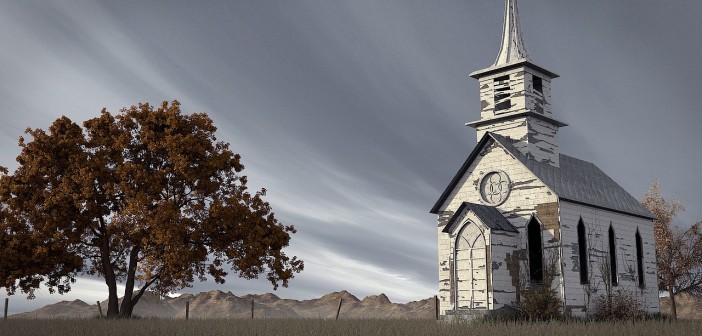We might want spiritual concerns to be the drivers of the revitalization of a parish. However, in my observations and experience, if there is one key to the renewal, that key is getting on top of the buildings. If the physical plant is in terrible shape, it will be the major source of anxiety and shame for the people. You must do whatever is necessary to get control of the buildings so that people can begin to think about other things with hope for the future. Of course you have to work on more than one front, but if you do not address the major sources of anxiety from the very beginning, you will not make progress.
The grounds, the buildings, and the contents of the buildings are physical expressions of the spirit of those who occupy them.
The importance buildings have in our lives is not surprising, because we are body-selves. The places where our bodies spend time have an effect on us. Whether large or small, grand or plain, the buildings in which we worship will both shape and express our feelings and our attitudes. The condition of the buildings affects us for good or ill. And the way the buildings look tells you how the congregation feels about itself.
At the same time, the buildings are not an end in themselves. We have buildings so that we can do the work God has given us to do. We do not keep up our buildings instead of fulfilling our mission; we take care of our buildings so that we can fulfill our mission. When the buildings are poorly kept, the people are aware that the parish’s ability to fulfill its mission is impaired. Clergy who are well-intentioned but misguided often make things worse by buying into the false dichotomy between buildings and mission.
Get Rid of the Junk
One of the primary ways leaders have dealt with the loss of income caused by the erosion of membership and attendance is by deferring maintenance on buildings. Very likely the congregation is anxious because of the state of the physical plant. You would not send your child to a college that could not maintain its buildings and grounds; you would not think of checking into a hospital that was not fully accessible and air-conditioned. We know that we are, in fact, ashamed to have outsiders see our beloved buildings in the state we have permitted them to reach.
The grounds, the buildings, and the contents of the buildings are physical expressions of the spirit of those who occupy them. In every case of which I am aware, as the congregation declines, the buildings deteriorate, the shrubbery gets overgrown, and stuff accumulates. Almost every parish — and certainly every parish on the brink of demise — could benefit from one or more dumpsters. Useless stuff just multiplies, reflecting and reinforcing the people’s sense that the situation cannot be addressed.
One of the places things will accumulate is in the vestibule of the church itself. Thus the very part of the building that any visitor will be certain to see assertively proclaims that the parish system is failing and has come to be comfortable with that. Most people will be happy to see things cleaned up, but you can expect some to be upset. Such a reaction is the normal resistance of a dysfunctional system to the introduction of any healthy element. Cleaning things up will make people feel that failure is not inevitable, and that is a threat to a system designed to fail. But get a dumpster, and trim the hedges as quickly as you can. Everybody will feel better.
Pay Attention to Bathrooms
You can tell a lot about a parish by how free things are of overgrowth and clutter, but you can sometimes get an unsettling view into the soul of the parish by looking at the bathrooms. Rusty partitions, inoperable or missing stall doors, mold on the walls, deteriorated floor tiles, leaky sinks with no hot water — the bathrooms show you how people really feel; they are reliable barometers of a parish’s self-esteem.
Bathrooms are not cheap to renovate, and custodial services are often in short supply, but those considerations are no excuse for dreadful bathrooms. I have seen plenty of old bathrooms that are freshly painted and scrubbed clean, with perhaps some little decoration. I was positively heartened by a bathroom with ancient fixtures and wooden partitions a century old because of its thrifty cleanliness and a few little touches that showed that the people cared. Redo the bathrooms as soon as you can, but in the meantime they do not have to be unpleasant. They can be clean and serviceable, and can thus let people know someone cares. Parishes need to make sure the messages such spaces communicate about them are the messages they want others to receive.
Signs of New Life
A parish on the brink is like a barren lot where nothing can grow in the compacted soil and everything that has tried to come up has been trampled down. Your work is to encourage any new shoot that appears and to soften the ground around it so it can grow better.
This article is adapted from Gerald’s most recent book, Back from the Dead: The Book of Congregational Growth (Morehouse Publishing, 2012), and used by permission. The book can be purchased at Amazon and Cokesbury.com.
Related Resources:
- Unclutter Your Church by Dottie Escobedo-Frank
- Connect with Your Neighbors Resource







